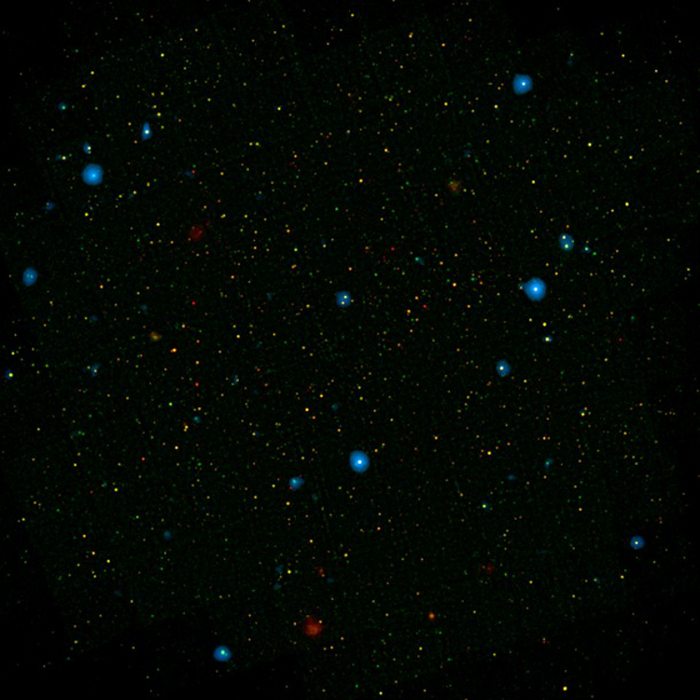
 Credit: NASA/JPL-Caltech
Credit: NASA/JPL-Caltech
Background Investigation
The blurred vision of early X-ray satellite observatories like HEAO-1 and the Einstein Observatory discovered a kind of "X-ray Olbers' Paradox" - a sky filled with X-ray emission in every direction. As X-ray vision improved, studies with observatories like ROSAT, XMM-Newton, Swift and especially the Chandra X-ray Observatory have resolved most of this background into emission arising from accreting supermassive black holes in individual active galaxies distributed throughout space and time. But astronomers believe that there may be a strong contribution to this X-ray background from a large population of "hidden" supermassive black holes, black holes which are shrouded by thick clouds of gas and dust, and that these black holes can only be found from the penetrating power of the high energy X-ray emission that they produce. Using the high-energy X-ray vision of the NuSTAR X-ray observatory, astronomers have made great progress in finding these hidden black holes. NuSTAR is the first X-ray satellite observatory that can directly image the X-ray sky at very high energies, and this capability is key to identifying the hidden black hole population. The image above shows a selection of galaxies that contain high-energy X-ray emitting supermassive black holes as blue dots, superimposed on a field of galaxies from the Hubble Space Telescope's Cosmic Evolution Survey (COSMOS). By studying the sources of the high energy X-ray background, astronomers are able to fit pieces into the puzzle of how black holes feed and grow over cosmic time.
Published: August 15, 2016
<
HEA Dictionary ● Archive
● Search HEAPOW
● Other Languages
● HEAPOW on Facebook
● Download all Images
● Education ● HEAD
>

Each week the HEASARC
brings you new, exciting and beautiful images from X-ray and Gamma ray
astronomy. Check back each week and be sure to check out the HEAPOW archive!
Page Author: Dr. Michael F. Corcoran
Last modified Monday, 26-Feb-2024 17:09:52 EST


